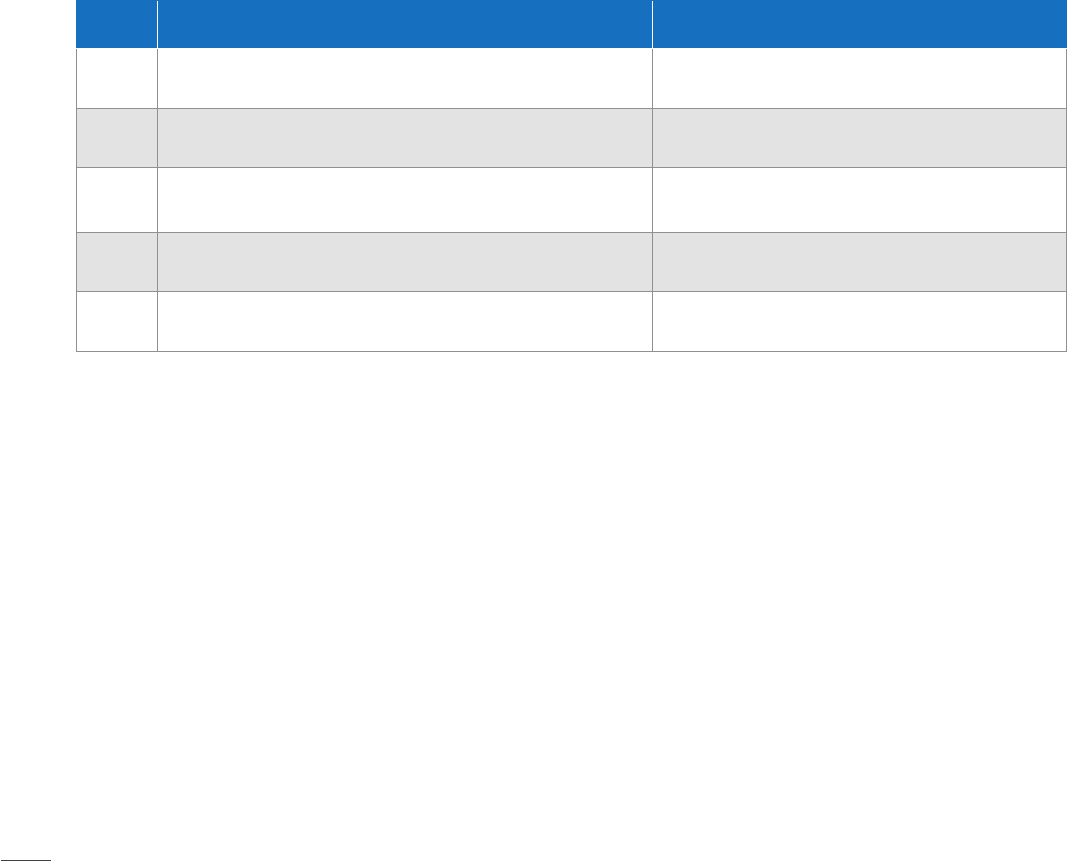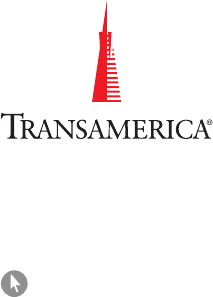
A GUIDE FOR INSURANCE PROFESSIONALS

2
For Agent Use Only. Not for Distribution To the Public.
LONG TERM CARE
INSURANCE RIDER OVERVIEW
The Company and its representatives do not give tax or legal advice. For questions regarding tax implications, the policy owner must consult with his or her own tax advisor.
1
Named Eligibility Period in the state of New York
Issue Ages 18-75 years (age last birthday), subject to policy issue age maximums
Minimum LTC Rider
Specified Amount
$100,000 ($112,500 Vermont, $150,000 South Dakota)
Maximum LTC Rider
Specified Amount
For IUL09 the LTC Rider Specified Amount is $2,000,000
LTC Rider Risk Classes
Preferred (no Substandard)
Nontobacco (up to Table D)
Tobacco (up to Table D)
Note: LTC Rider is not available on life insurance base policies rated higher than Table D;
LTC Rider and base policy may have dierent risk classes and ratings.
Base Policy Death
Benefit Option Availability
Level, Increasing, or Graded. Increasing Option policies will be changed to Level upon exercise of the LTC Rider.
Base Policy 7702 Test Cash Value Accumulation Test (CVAT) or Guideline Premium Test (GPT) (May vary by product)
Benefit Eligibility Triggers
Inability to perform 2 out of 6 Activities of Daily Living (bathing, continence, dressing, eating, toileting,
transferring); or Severe Cognitive Impairment
Elimination Period
1
Insured has incurred expenses for Qualified LTC Services for 90 days and does not have to be continuous
90 days. (Needs to be satisfied only once)
Maximum Monthly Rider
Benefit
Lesser of: 2% of the LTC Specified Amount when LTC benefits begin; or the per diem amount allowed by HIPAA
times the number of days in the month.
Rider Availability
The LTC Rider will be available with the Base Insured Rider (max age is 60), Terminal Illness Rider, Critical
Illness Rider (Not available in the state of New York), Income Protection Option, and Overloan Protection Rider.
The Chronic Illness Rider is NOT available with the Long Term Care Rider.
Rider Charges
Until the policy anniversary at the insured’s age 121, Rider Charges will be calculated monthly and subtracted
from the Policy Value at the beginning of each policy month.
Waiver of LTC Rider
Charges
LTC Rider charges are waived while LTC Rider benefits are being paid. All other policy monthly deductions
continue.
Residual Death Benefit
(Provided by separate
endorsement)
A Residual Death Benefit may be payable if the insured dies while on claim or if the Rider Maximum Amount has
been paid. No Residual Death Benefit is payable if the insured has recovered and is not on claim.
Loans and Withdrawals
In all states except California, not allowed while on claim. Loans and withdrawals will reduce the death benefit
and LTC Rider benefit. For IUL09: Under the Terminal Illness Rider, the insured can qualify for benefits under
both riders, but the Terminal Illness will be paid first. Payment under Terminal Illness Accelerated Death Benefit
will reduce the policy and the LTC Rider Face Amount proportionately. Benefits for both riders will not be paid
simultaneously.
LTC Specified Amount Equals the base policy Face Amount. No other amount can be elected.
Increase in LTC Rider
Specified Amount
Increases aren’t allowed on the base policy or the LTC Rider while LTC Rider is on the policy. However, if the
owner changes the death benefit option which results in an increase in the Face Amount of the policy, the LTC
Rider Specified Amount will also increase such that it is equal to the base policy Face Amount.
Illustration Capabilities Hypothetical LTC claim scenarios available

3
For Agent Use Only. Not for Distribution To the Public.
PROTECTION THAT MAY
HELP FOR THE LONG HAUL
OPTIONAL LONG TERM CARE RIDER OFFERS ADDITIONAL PROTECTION IN AN
UNCERTAIN WORLD
The Long Term Care (LTC) Rider is designed to accelerate the death benefit of
the base policy to help policy owners oset expenses that arise in connection
with Qualified Long Term Care Services for the insured.
The LTC Rider Specified Amount is equal to 100% of the base policy Face Amount, so the full Face Amount of the
policy, less any outstanding loans, can be accelerated over the life of the LTC Rider.
There is a Rider charge taken as a Monthly Deduction from the Policy’s Value. The LTC Rider monthly deduction
rates will not be level in all policy years (in most states) but rather will vary by the insured’s attained age, gender,
risk class, and Face Amount band.
2
The LTC Rider is intended to be federally tax-qualified LTC insurance coverage under Sections 101(g) and 7702B of
the Internal Revenue Code (IRC) of 1986, as amended.
3
The LTC Rider provides insurance coverage for Qualified Long Term Care Services as described in Section 101(g)
and Section 7702B(c). As such, LTC Rider benefits may be income tax-free when received. Generally, accelerated
death benefit payments from a qualified LTC rider or contract are not included as income for tax purposes so long
as the payments made from all LTC contracts are not more than the greater of (a) the HIPAA per diem limits for
LTC benefits or (b) the actual expenses incurred for Qualified Long Term Care Services. Since the maximum income
tax-free LTC benefits for any insured are based on benefits paid from all sources, it is possible, of course, that any
benefit payment from the LTC Rider could be taxable if LTC benefit payments are received from other sources. Also,
the tax-free limit for any insured is first allocated to benefits paid to the insured, with any remaining nontaxable limit
then allowed to others who may receive benefits related to the insured. Clients should consult with and rely on a
tax advisor.
Benefits paid under the LTC Rider will reduce the life insurance policy’s death benefit and Cash Surrender Value.
Policy owners should consider whether their life insurance needs would still be met if LTC Rider benefits are paid
out in full. There is no guarantee that the LTC Rider will cover all of the costs associated with long term care that the
insured incurs during the period of coverage.
The Long Term Care Rider is not disability insurance and does not provide disability insurance.
AVAILABILITY
Only the primary insured on the policy is covered under the LTC Rider. If the policy owner and the insured are
dierent individuals, the policy owner is not covered. On certain policies, the Overloan Protection Rider (OPR) is
available in conjunction with the LTC Rider. However, the OPR cannot be exercised if the client is receiving LTC
benefits. The LTC Rider will be available with the Base Insured Rider (max age is 60), Terminal Illness Rider, Critical
Illness Rider, Income Protection Option, and Overloan Protection Rider. The Chronic Illness Rider is NOT available
with the Long Term Care Rider.
2
May vary by state
3
The Company and its agents and representatives do not give tax or legal advice. This material and the concepts presented here are for information purposes only and should
not be construed as tax or legal advice. Any tax and/or legal advice the client may require or rely on regarding this material should be based on their particular circumstances
and should be obtained from an independent professional advisor.
LONG TERM CARE RIDER OVERVIEW | TRANSAMERICA

4
For Agent Use Only. Not for Distribution To the Public.
UNDERWRITING
For detailed underwriting information, please download the Long Term Care Rider Underwriting Guide.
The LTC Rider will be fully underwritten for all issue ages and risk classes. Information regarding the insured’s health
status and underwriting risk class will be obtained from the base policy application, a supplemental application,
the Medical Information Bureau (MIB), a telephone interview, a prescription benefit manager report, a cognitive
screening test via telephone interview, and an onsite face-to-face assessment, as applicable, depending on the issue
age of the proposed insured.
Underwriting approval and rating classification of the LTC Rider is separate and distinct from approval and rating of
the base policy. All underwriting evidence that is required for the life insurance policy and the LTC Rider will need to
be received prior to underwriting making final determinations. The underwriting evidence received for both the base
policy and the Rider will be used in determining the risk classification for both the base policy and the LTC Rider.
UNDERWRITING RISK CLASSES FOR THE LTC RIDER ARE:
• Preferred (no Substandard)
• Nontobacco (up to Table D)
• Tobacco (up to Table D)
The base policy must be rated Table D or less in order to be eligible for the LTC Rider. A Non-Preferred class
LTC Rider may be rated Tables A – D and may have a dierent rating than the base policy. Initial underwriting
requirements for the LTC Rider are shown in the following chart:
AGE INITIAL LTC U/W REQUIREMENTS AT UNDERWRITER’S DISCRETION
18–44 Medical Information Bureau (MIB), Prescription History (RX)
Medical Records “For Cause,” Face-to-Face Assessment
(F2F) “For Cause”, LTC Phone Interview (PIL)
45–59 Medical Information Bureau (MIB), Prescription History (RX)
Medical Records “For Cause,” Face-to-Face Assessment
(F2F) “For Cause,” LTC Phone Interview (PIL)
60–65
Medical Information Bureau (MIB), LTC Phone Interview with
Cognitive Screen (PIC), Prescription History (RX)
Medical Records “For Cause,” Face-to-Face
Assessment (F2F) “For Cause”
66–69
Medical Information Bureau (MIB), Medical Records, LTC Phone
Interview with Cognitive Screen (PIC), Prescription History (RX)
Face–to-Face Assessment (F2F) “For Cause”
70–75
Face-to-Face Assessment (F2F), Medical Information Bureau (MIB),
Medical Records, Prescription History (RX)
Not Applicable
BENEFIT ELIGIBILITY
To be initially eligible for benefits, the following must be satisfied:
• The insured must be certified as a Chronically Ill Individual
• A Plan of Care prescribed and approved by a Licensed Healthcare Practitioner must be provided
• Proof of Loss documentation must be provided to us each month showing expenses incurred for Qualified LTC
Services in accordance with the Plan of Care
• The 90-day Elimination Period must be satisfied
• Qualified Long Term Care Services must begin while the Rider is in force
• All LTC expenses must be incurred for Qualified LTC Services rendered or goods provided while the Rider is in force
• All care and services must be in accordance with accepted medical and nursing standards of practice and be
consistent with the insured's current Plan of Care
• If required, an assessment of the insured’s functional and cognitive abilities will be completed at our expense. If an
assessment is performed and the Licensed Healthcare Practitioner cannot certify that the individual is Chronically
Ill and is expected to remain so for a period of at least 90 days, then the claim will not be approved.

5
For Agent Use Only. Not for Distribution To the Public.
CHRONICALLY ILL
Chronically Ill Individual means an individual who has been certified by a Licensed Healthcare
Practitioner as:
1. Being unable to perform, without substantial assistance from another individual, at
least two out of the six Activities of Daily Living (ADL) — bathing, continence, dressing,
eating, toileting, transferring — for an expected period of at least 90 days due to a loss of
functional capacity
2. Requiring substantial supervision to protect the insured from threats to health and safety
due to Severe Cognitive Impairment
ELIMINATION PERIOD
4
This Rider has an Elimination Period of 90 days. This means that we will not pay benefits under
this Rider for any period before the insured has incurred expenses on each of 90 separate days
during which this Rider is in eect for Qualified Long Term Care Services that would otherwise
be covered under this Rider. These days of care or services need not be continuous. Proof of
Loss must be provided in order to satisfy the Elimination Period.
The 90-day Elimination Period needs to be satisfied only once for the Rider.
5
During the
Elimination Period, the insured must satisfy the requirements for qualification and incur expenses
for receipt of covered long term care services. We will require a certification by a Licensed
Healthcare Practitioner that the insured was a Chronically Ill Individual during the Elimination
Period. It must include documentation that during the Elimination Period, the insured received
Qualified Long Term Care Services for which the insured incurred a charge.
The actual dollar amount of expenses incurred and paid is not material in determining whether
an Elimination Period has been satisfied. Qualifying long term care expenses must be incurred
and paid. Evidence of those expenses must be provided to Transamerica to support satisfaction
for each day in the Elimination Period.
PROOF OF LOSS
Proof of Loss documentation must be provided to Transamerica each month showing expenses
incurred for Qualified Long Term Care Services, in accordance with the Plan of Care. The
documentation must be provided within 90 days after the end of the Elimination Period, and
within 90 days after the end of each month and for each month for which benefits may be paid.
The policy owner must either provide us with this information or authorize its release to us.
PLAN OF CARE
We must receive a written assessment of the insured’s physical and cognitive abilities by a
Licensed Healthcare Practitioner based on a face-to-face evaluation of the insured. All care and
services must be consistent with the assessment done to develop the Plan of Care and be in
accordance with generally accepted standards of care for a Chronically Ill Individual.
WHAT IS NOT COVERED?
Qualified Long Term Care Services do not include care, confinement, or services:
• Resulting from alcoholism or drug addiction
6
• Resulting from attempted suicide or intentionally self-inflicted injury
• Resulting from participation in a felony, riot, or insurrection
• For which no charge is normally made in the absence of insurance
• For informal care outside of the 50 U.S. states and the District of Columbia
• Not included in the insured’s plan of care
4
Named eligibility period in the state of New York
5
In New York, the 90-day Eligibility Period must be satisfied within a period of 180 consecutive days. Any LTC Rider benefits payable will be
payable retroactively as of the first day of the Eligibility Period.
6
May vary by jurisdiction. Please refer to the LTC Rider for details.
5
BENEFITS ON ELIGIBILITY | TRANSAMERICA

6
For Agent Use Only. Not for Distribution To the Public.
QUALIFIED LONG TERM CARE SERVICES DO NOT INCLUDE CARE, CONFINEMENT, OR SERVICES:
• Provided in a government facility (unless otherwise required by law) or under any governmental programs
(except Medicaid or Medi-Cal)
• Paid or payable under Medicare
7
or under any state or federal workers compensation, employer’s liability or
occupational disease law, or any motor vehicle no-fault law; unless the costs incurred and paid exceed the
amount covered by one of these entities, policies, or programs
RIDER BENEFITS
MONTHLY BENEFITS
Any benefits payable under the LTC Rider will be paid monthly in the amount the policy owner chooses, subject to
the minimum of $500 (in most states) and the maximum. The maximum monthly benefit for any calendar month
will be equal to the lesser of “a” or “b” where:
• Is 2% of the LTC Rider Specified Amount at commencement of benefits
• And is the monthly amount allowed by HIPAA, which is the per diem amount times the number of days in the
calendar month
Choosing an amount less than the Maximum Monthly LTC Rider Benefit could extend the period during which
benefits may be payable.
Once selected, the benefit amount will remain in eect for the remainder of the current calendar year. It may
be changed for subsequent calendar years by providing written notice 30 days before the beginning of the next
calendar year.
LTC RIDER SPECIFIED AMOUNT
The LTC Rider Specified Amount will be equal to 100% of the base policy Face Amount.
• Minimum LTC Rider
Specified Amount: $100,000
($112,500 in Vermont and $150,000 in South Dakota)
• Maximum LTC Rider
Specified Amount at issue: $2,000,000
8
7
This includes any amount that would be covered under Medicare, except that they are subject to a Medicare deductible or co-insurance of some kind. This does not apply when
expenses are reimbursable under Medicare solely as a secondary payer.
8
For states that have not yet approved IUL09, the maximum specified amount remains at $1,000,000.

7
For Agent Use Only. Not for Distribution To the Public.
LTC RIDER SPECIFIED AMOUNT CHANGES
Reductions in the LTC Rider Specified Amount are not allowed independent of reductions in the policy Face Amount.
While this Rider is in force, increases in the base policy’s Face Amount are not allowed. Transactions that increase
or reduce the Face Amount of the policy, such as a death benefit option change, will also result in a dollar-for-dollar
change in the Long Term Care Rider Specified Amount. At the commencement of LTC Rider benefits, we will change
the policy death benefit option to Level, if it is not already.
RIDER BENEFIT PERIOD
Monthly Rider benefit payments begin after the end of the Elimination Period and after the claim for Rider benefits
has been approved by us.
Once Rider benefit payments begin, they will continue to be paid each calendar month so long as:
1. The insured remains Chronically Ill and incurs expenses for Qualifying Long Term Care Services
2. The LTC Rider Maximum Amount has not been fully paid out
3. The policy owner does not request termination of the claim or the Rider
4. All care and services are consistent with the insured’s current Plan of Care, and required Plan of Care, and Proof
of Loss documentation is provided
LAPSE PROTECTION
While LTC Rider benefits are being paid, the policy will not lapse due to the policy’s Cash Surrender Value not being
sucient to pay the Monthly Deduction or any applicable Index Account Monthly Charge.
INTERNATIONAL COVERAGE BENEFIT
Under the International Coverage Benefit, benefits are payable if the Insured has incurred expenses for International
Long Term Care Facility confinement outside the 50 United States and the District of Columbia, or Canada.
All of the terms of the Policy and the Long Term Care Rider attached to the policy apply to this benefit except as
specifically stated in this provision.
The International Coverage Benefit will pay benefits in lieu of all other benefits under this rider. Monthly charges
for this rider will not be waived while the insured is receiving the International Coverage Benefit. In addition to a
claim form and Proof of Loss, proof acceptable to us that the insured is receiving care outside of the 50 United
States and the District of Columbia, or Canada must be provided. We may require updates to this proof no more
frequently than every 30 days. All documentation must be provided to Transamerica in English. The translation of
any documents must be done by a professional translation service, at the insured’s own expense. A copy of any
untranslated documentation must be provided as well.
Receiving benefits outside the United States may subject to taxation in the United States, in the insured’s country
of residence or both. Benefits may be subject to tax withholding. We may require additional information from the
insured at the time of claim to determine our withholding and reporting obligations. As with any tax matter, the
policyowner should consult a tax advisor to evaluate any tax impact.
The International Coverage Benefit is available with the Long Term Care Rider (LTCR03) on Transamerica Financial
Foundation IUL (IUL09) policies. This benefit is not available in all states.
INTERNATIONAL LONG TERM CARE FACILITY
An International Long Term Care Facility is a health care facility that is located outside the 50 United States and the
District of Columbia, or Canada and is licensed, certified, or registered by the appropriate authority in the country in
which it is located to provide inpatient care for persons who are in need of assistance with Activities of Daily Living or
are Severely Cognitively Impaired. The facility must charge a fee for the inpatient care at the time the care is provided.
An International Long Term Care Facility must:
1. provide personal care by on-site sta. It must also provide three meals a day, including special diets;
2. have procedures in place establishing appropriate protocol for medication management and the handling and
administration of drugs and biologicals;
RIDER BENEFITS | TRANSAMERICA

8
For Agent Use Only. Not for Distribution To the Public.
3. provide an emergency call system and on-site facility sta able to respond to and meet both scheduled and
unpredictable needs of residents on a 24-hour-a-day basis. The sta’s duties must include supervision of safety,
security and awareness of the whereabouts of the residents at all times; and
4. have a medical doctor or medical nurse on site or on contract to provide nursing services specified in case of an
emergency. A medical doctor must be licensed and legally authorized to practice medicine in the jurisdiction in
which the services of a doctor are provided. A medical nurse must be (1) the functional equivalent of a Nurse (as
defined in this rider) for the jurisdiction in which the nursing services are provided; and (2) be licensed or registered
and legally authorized to provide skilled nursing services in the jurisdiction in which nursing services are provided.
Regardless of name, any properly licensed, certified, or registered facility providing the services set forth above
will qualify as an International Long Term Care Facility. This includes, for example: nursing homes; skilled nursing
facilities; nursing care facilities; assisted living facilities; adult foster care facilities; congregate care facilities; basic
care facilities; residential care facilities; family and group assisted living facilities; boarding care homes; domiciliary
care homes; personal care homes; and hospice care facilities.
In those countries where there is no facility that is licensed, certified or registered to provide inpatient care for
persons who are in need of assistance with Activities of Daily Living or are Severely Cognitively Impaired, a
facility must meet all of the requirements in items # 1-4 listed above. In addition, it must meet all of the following
requirements in order to qualify as a Long Term Care Facility:
1. provides the following information in writing to each resident:
a. a tenant services contract or agreement in place for each resident; and
b. admission and transfer/discharge requirements;
2. provides a minimum of 10 beds; and
3. has sta on site 24-hours-a-day to provide personal care.
An International Long Term Care Facility does not mean a facility or part of a facility that is operated mainly for
the treatment and care of: mental, nervous, psychotic or psychoneurotic deficiencies or disorders; tuberculosis;
alcoholism, substance abuse, or drug addiction; or rehabilitation or occupational therapy. An International Long
Term Care Facility is not a rehabilitation hospital/facility.
An International Long Term Care Facility does not include a hospital, except for a separate and distinct wing or
section of a hospital, if such wing or section, including the Insured’s assigned bed, is appropriately licensed, certified,
or registered to provide the level of care defined above. Also, an International Long Term Care Facility does not
include: an independent living apartment or unit; hotel; motel; retirement home; or any dwelling similar to these.
LTC RIDER CHARGES
The monthly Rider charge will be determined by multiplying the base Policy’s Net Amount at Risk (NAR) by the
LTC Rider charge (per $1,000 of base Policy NAR). The LTC Rider charge is taken until the policy anniversary at the
insured’s age 121. The LTC Rider monthly deduction rates will vary by the insured’s issue age, duration, gender, risk
class, and Face Amount band.
WAIVER OF LTC RIDER CHARGES
Rider charges will be waived while Rider benefits are being paid. When
the insured is no longer on benefit, Rider charges will be assessed beginning with the first monthly date following
the cessation of Rider benefits. When the sum of LTC Rider benefits paid out equals the LTC Rider Specified Amount
or the LTC Rider Maximum Amount, we will no longer assess any LTC Rider Monthly Deductions under the policy.
ADDITIONAL INFORMATION
DEATH BENEFIT
The total amount of LTC Rider benefits paid reduces the death benefit payable on the death of the insured. If
the insured dies while receiving benefits under the LTC Rider, or the insured dies after we have paid the Rider
Maximum Amount, the Residual Death Benefit will be available if it is higher than the policy’s death benefit (less any
outstanding loans), reduced by the total amount of the LTC Rider benefits paid.

9
For Agent Use Only. Not for Distribution To the Public.
9
Permanent life insurance policies are required to keep a certain margin between the Policy Value and the death benefit in order to qualify as life
insurance for federal income tax purposes. To maintain this margin, the death benefit may be increased relative to the Policy Value, causing the
policy to be what is referred to as “in corridor.” Although the policy’s death benefit may exceed the Face Amount of the policy when the policy is
in corridor, the LTC Rider Specified Amount does not increase since it is based on the policy’s Face Amount and not on the death benefit (when
that latter amount differs from the Face Amount).
Although the policy’s death benefit may exceed the Face Amount of the policy when the
policy is in corridor
9
, the LTC Rider Specified Amount does not increase since it is based on
the policy’s Face Amount and not on the death benefit (when that latter amount diers from
the Face Amount).
RESIDUAL DEATH BENEFIT
The Residual Death Benefit is equal to the lesser of:
1. 10% of the lowest Face Amount of the base policy from inception, less any outstanding
policy loans
2. $10,000
No Residual Death Benefit is payable if the insured has recovered and is not on claim.
EFFECT OF REACHING THE RIDER MAXIMUM AMOUNT
After the Rider Maximum Amount has been paid:
• We will not charge any further monthly charges for this Rider
• Interest will continue to be credited to the Policy Value if it is not less than zero
• Any negative Policy Value will be reset to zero
• Policy owner must pay interest on any policy loans as it becomes due or the policy may
terminate
POLICY VALUE
Since payment of monthly Rider benefits is an acceleration of the base policy’s death benefit,
the sum of the LTC Rider benefit payments is a lien on the death benefit and the Cash
Surrender Value. However, there is no eect on the Policy Value. While Rider benefits are
being paid, even though Rider charges are waived, all other policy Monthly Deductions and
Index Account Monthly Charges (if applicable) continue to be assessed even if the Policy
Value becomes negative.
CASH SURRENDER VALUE
The Cash Surrender Value is reduced by the total amount of LTC Rider benefits paid. Further,
the amount available for any future policy loans or withdrawals will be limited to the excess of
the Surrender Value over the sum of Rider benefits paid.
LOANS AND WITHDRAWALS
Loans and withdrawals will not be permitted while LTC Rider benefits are being paid.
POLICY LOANS
If there are any outstanding policy loans at the time Rider benefits are being paid, and
loan interest due is not paid, the outstanding loan will capitalize until the amount of any
outstanding loan plus the LTC Rider benefits paid equals the LTC Rider Specified Amount (i.e.,
the Rider Maximum Amount is reached).
BASE POLICY FACE AMOUNT
Transactions that reduce the Face Amount of the policy will result in a dollar-for-dollar
reduction in the LTC Rider Specified Amount. When monthly LTC Rider benefits begin, the
policy Face Amount is not reduced dollar-for-dollar each month by the amount of the LTC
Rider benefits paid.
9
LTC RIDER CHARGES & ADDITIONAL INFORMATION | TRANSAMERICA

10
For Agent Use Only. Not for Distribution To the Public.
FREE-LOOK PERIOD AND DELIVERY RECEIPT
The LTC Rider has a 30-day free-look period which begins on the date the policy is received by the owner. We will
require a delivery receipt upon delivery of a policy. If the Rider is not taken but the policy is accepted, the policy will
need to be reissued with revised policy data pages and without the LTC Rider.
REINSTATEMENTS
If the policy lapses and is reinstated, the LTC Rider may be reinstated with evidence of insurability specific to the LTC
coverage. At time of reinstatement, the supplemental application will need to be submitted. The “reinstatement” box
in the supplemental application will need to be checked.
However, if the Rider lapses while the insured is Chronically Ill but not yet receiving LTC benefits, we will reinstate
the Rider along with the policy, subject to all the conditions for reinstatement described in the policy and any
endorsements to the policy, except that evidence of insurability will not be required if:
• We receive a written request for reinstatement within 180 days after the date of lapse
• We receive a Licensed Healthcare Practitioner’s written certification that the insured was diagnosed, using
generally accepted medical diagnostic methods and tests, as being a Chronically Ill Individual at the time the Rider
lapsed
• We receive all unpaid, overdue rider charges for this Rider. If the policy and LTC Rider are being reinstated under
this provision, the supplemental application will not need to be submitted. Any claim incurred during the 180-day
period will be considered for benefits subject to all other Rider provisions.
LTC REPLACEMENT
If a life insurance policy that includes a Long Term Care Rider is being replaced by another life insurance policy that
includes the LTC Rider, then both life insurance as well as long term care replacement requirements must be satisfied.
TAX CONSIDERATIONS
The LTC Rider is intended to provide federally tax-qualified long term care insurance coverage under Section 101(g)
and Section 7702B(b):

11
For Agent Use Only. Not for Distribution To the Public.
• LTC benefits are intended to be excludable from Federal Gross Income, with the exception for certain business-
related policies described in Section 101(g)(5)
• Even if the policy is a Modified Endowment Contract (MEC), the intent is for the LTC benefit to continue to be
excludable from income taxes, subject to the exceptions in Section 101(g)(5)
POINT OF SOLICITATION REQUIREMENTS
Because sales of the LTC Rider are governed by Long Term Care Regulations, the following requirements are necessary
for solicitation in addition to those required for the base policy:
• Outline of Coverage
• Notice of Availability of Senior Insurance Counseling Program
• Medicare Supplement Buyers Guide
• HIPAA Notice of Health Information Privacy Practices
Note: Some states require additional materials at time of solicitation.
ILLUSTRATING THE LTC RIDER BENEFIT
The illustration software allows for a hypothetical LTC benefit scenario to be illustrated when the HIPAA per diem estimated
growth rate and the insured’s age, at which, to begin receiving LTC monthly benefits are specified. The Hypothetical Long
Term Care Benefit Scenario will appear in a supplemental illustration. The Quick View page will reflect the annualized cost
of the LTC Rider. When the LTC Rider is selected, the base policy illustration will display the initial underwriting requirements
for the LTC Rider alongside the underwriting requirements. An Outline of Coverage will also be generated with the illustration
output. The Outline of Coverage is a required document that must be presented to the applicant at the time of solicitation.
The LTC Rider option appears on the Policy Riders section. On this screen the notice reminds the user that the producer must
be appropriately licensed to sell LTC insurance. The default risk class for the LTC Rider will be the risk class most similar to the
base policy risk class. An LTC Rider risk class dierent from the default risk class may be selected by the user.
To illustrate the Hypothetical Long Term Care Benefit Scenario, the user can indicate:
• The HIPAA Per Diem Growth Rate field allows the user to specify an inflation rate that would aect the
HIPAA per diem amount
• The Projected LTC Benefit Starting Age field allows the user to specify the age at which LTC benefit may
be received
Loans, withdrawals, and policy changes are not illustratable on the Supplemental LTC illustration for durations
beginning after the Projected LTC Benefit Starting Age.
PROTECTION AGAINST UNINTENTIONAL LAPSE – THIRD-PARTY DESIGNATION & GRACE PERIOD
The LTC Rider cannot lapse or terminate unless a notice of termination for nonpayment of premium has been provided
to the policy owner and any third-party designee at least 30 days before the eective date of the lapse or termination.
The notice will not be provided until a period of 30 days after a premium is due and unpaid.
Before the policy is delivered, the policy owner must be given the opportunity to designate, in writing, at least one
other person who may receive a notice of termination for nonpayment of premium and a policy lapse notice. The third
party’s full name and address must be provided. If the owner chooses to not have a third party designated, it must be
specified in writing. A section for the designation election will be included on the Application Supplement Part 1 for
the LTC Rider.
The Grace Period for this rider is 65 days. If any amount due is not paid within 30 days from the date that it was due,
we will send a notice to the policy owner, the insured and the person or persons designated by the policy owner to
receive such notice at the addresses provided to us. A notice will be given by first-class United States mail, postage
prepaid. An additional 35 days will be provided to pay the amounts due after we have mailed the notice. During the
Grace Period this rider will stay in eect. The person or persons named are not responsible for paying the premium.
The policy owner may change the person or persons named at any time while this rider is in eect. Please note that
the new address must be provided if any of the addresses change. Information regarding any changes should be sent
in writing to our Administrative Oce at 4333 Edgewood Rd. NE, Cedar Rapids, IA 52499. We will provide a reminder
of the right to change the person or persons named at least every two years.
LTC RIDER CHARGES & ADDITIONAL INFORMATION | TRANSAMERICA

Named Comprehensive Long Term Care Insurance Rider (LTC Rider) in California, the Long Term Care Rider is an optional rider available on the Transamerica Financial
Foundation IUL policy.
The LTC Rider and the base policies are issued by the following companies: Transamerica Premier Life Insurance Company, Cedar Rapids, IA, Transamerica Life Insurance
Company, Cedar Rapids, IA, or Transamerica Financial Life Insurance Company, Harrison, NY.
LTC Rider Form #s LTCR03, ICC12 LTCR03, LTCR03 CA, and LTCR03 NY
Policy Form #s ICC16 IUL09, IUL09, and IUL09 NY
Rider forms and numbers may vary, and may not be available in all jurisdictions.
TFLIC Financial Foundation IUL is issued by Transamerica Financial Life Insurance Company, Harrison, NY. Transamerica Financial Foundation IUL is issued by Transamerica
Premier Life Insurance Company, Cedar Rapids, IA, or Transamerica Life Insurance Company, Cedar Rapids, IA. Transamerica Financial Life Insurance Company is authorized to
conduct business in New York. Transamerica Premier Life and Transamerica Life Insurance Company are authorized to conduct business in all other states.
This Rider should not be the sole basis to purchase any life insurance policy. This brochure is not intended to be a full description of the Long Term Care Rider.
Rider availability, provisions, and benefits may vary by state. Please see the Rider for complete details regarding exclusions and limitations.
Rider benefits may be income tax-free when received. Since the maximum income tax-free LTC Rider benefits are based on benefits paid from all sources, benefit payments from
the Rider could be taxable if LTC Rider benefit payments are received from other sources.
This Rider accelerates the death benefit of the underlying life insurance policy, for Qualified Long Term Care Services, and is not a health insurance policy providing
long term care insurance subject to the minimum requirements of New York law, does not qualify for the New York State Long Term Care Partnership program, and
is not a Medicare supplement policy. Receipt of accelerated benefits may affect eligibility for public assistance programs.
The Company and its agents and representatives do not give tax or legal advice. This material and the concepts presented here are for informational purposes
only and should not be construed as tax or legal advice. Any tax and/or legal advice the client may require or rely on regarding this material should be based on the
client’s particular circumstances from an independent professional advisor.
For Agent Use Only. Not for Distribution To the Public.
127017R4 12/21
Begin your journey today.
Visit: transamerica.com
